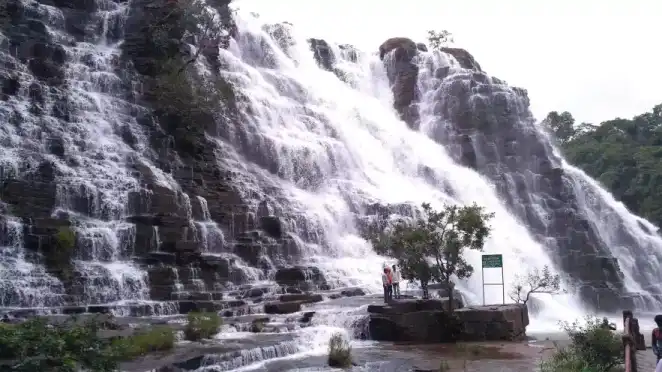Bastar District: A Comprehensive Exploration
Introduction
Bastar, a district in the state of Chhattisgarh, India, is a region steeped in rich history, diverse cultures, and breathtaking landscapes. Known for its dense forests, tribal communities, and unique traditions, Bastar offers a fascinating glimpse into a world that blends the ancient with the contemporary. This article delves into the various aspects that make Bastar a remarkable district, including its demography, culture, geography, cuisines, history, literary contributions, and administration.
Demography
Bastar's population is a tapestry of various tribal communities, predominantly the Gonds, Murias, and Halbas. As of the latest census, the district has a population of approximately 1.4 million people. The tribal population constitutes about 70% of the total, making it one of the most significant tribal districts in India. The literacy rate is around 54%, with significant efforts being made to improve educational infrastructure and access.
Population Distribution
The district is divided into several tehsils, with Jagdalpur being the administrative headquarters and the largest urban center. Other notable towns include Kondagaon, Kanker, and Narayanpur. The rural areas are dotted with numerous small villages, each with its unique customs and traditions.
Culture
The culture of Bastar is deeply rooted in tribal traditions, with a vibrant array of festivals, dances, and rituals. The Dussehra festival of Bastar is particularly famous, celebrated with immense fervor and lasting for 75 days, unlike the rest of India where it lasts for 10 days.
Festivals and Rituals
- Bastar Dussehra: This festival is a unique blend of Hindu and tribal traditions, marked by elaborate processions, offerings to deities, and various cultural performances.
- Madai Festival: Celebrated by the Gond tribe, it involves worshiping the local deity, cattle fairs, and traditional music and dance.
- Goncha Festival: Known for its mock fights using bamboo sticks and fruits, this festival symbolizes the valor and warrior spirit of the tribal people.
Traditional Attire and Crafts
The people of Bastar are known for their distinctive attire, often made from local materials and adorned with intricate beadwork and metal ornaments. The district is also famous for its handicrafts, particularly the Dhokra metal casting, woodwork, and weaving.
Geography
Bastar is characterized by its diverse and rugged terrain, featuring dense forests, rivers, waterfalls, and plateaus. The district is part of the Dandakaranya region, which is rich in flora and fauna.
Natural Attractions
- Chitrakote Waterfalls: Often referred to as the "Niagara of India," this horseshoe-shaped waterfall is a major tourist attraction.
- Tirathgarh Waterfalls: Another stunning cascade, surrounded by lush greenery, perfect for trekking and picnicking.
- Kanger Valley National Park: A biodiversity hotspot, home to rare species like the Bastar Hill Myna, and features limestone caves such as the Kotumsar and Kailash caves.
Climate
Bastar experiences a tropical climate with three distinct seasons: summer, monsoon, and winter. The best time to visit is during the winter months from November to February, when the weather is pleasant and conducive for exploring the natural beauty.
Cuisines
Bastar's cuisine reflects its tribal heritage, with an emphasis on locally sourced ingredients and traditional cooking methods.
Popular Dishes
- Chapda Chutney: A unique chutney made from red ants, known for its tangy flavor and nutritional value.
- Mahua Drink: A traditional alcoholic beverage made from the flowers of the Mahua tree, widely consumed during festivals and social gatherings.
- Fara: A type of dumpling made from rice flour, filled with lentils and spices, steamed to perfection.
Food Culture
Meals in Bastar are often communal, reflecting the close-knit nature of tribal communities. Food is typically cooked over an open fire, with a focus on sustainability and minimal waste.
History
Bastar has a rich historical tapestry, influenced by various dynasties and colonial powers.
Ancient and Medieval Periods
The region was ruled by the Naga dynasty, followed by the Kakatiya dynasty in the medieval period. These rulers contributed to the region's development, particularly in terms of architecture and cultural practices.
Colonial Era and Independence
During the British Raj, Bastar was part of the Central Provinces and Berar. The region played a significant role in the freedom struggle, with tribal leaders actively participating in movements against colonial rule.
Literary Contributions
Bastar has a thriving oral tradition, with folk tales, songs, and poetry forming an integral part of its cultural heritage.
Notable Figures
- Narayan Lal Kachhap: A renowned poet and writer from Bastar, known for his contributions to tribal literature and documentation of local folklore.
Literary Forms
The district's literary landscape includes various forms such as:
- Folk Songs: Sung during festivals and rituals, often accompanied by traditional instruments.
- Storytelling: An essential part of community gatherings, preserving historical narratives and moral lessons.
Administration
Bastar is administratively divided into several blocks, each overseen by local governance bodies.
Governance Structure
- District Administration: Headed by the District Collector, responsible for implementing government policies and development programs.
- Panchayati Raj Institutions: These grassroots governance bodies play a crucial role in local decision-making and development activities.
Development Initiatives
The district administration focuses on various development initiatives aimed at improving infrastructure, healthcare, education, and livelihood opportunities for the tribal population.
Conclusion
Bastar is a district that encapsulates the essence of India's tribal heritage, natural beauty, and cultural diversity. Its unique blend of history, traditions, and modernity makes it a fascinating destination for those looking to explore an uncharted yet profoundly rich part of India. As efforts continue to promote sustainable development and preserve its cultural heritage, Bastar stands as a testament to the enduring spirit of its people and the timeless allure of its landscapes.
